Fixing a Slow Draining Tub: A Comprehensive Guide
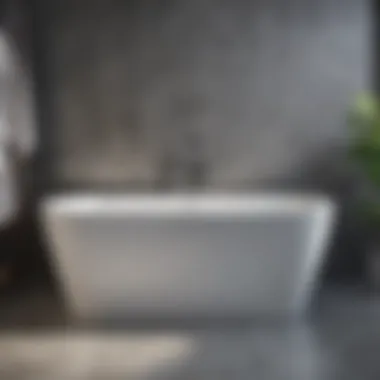
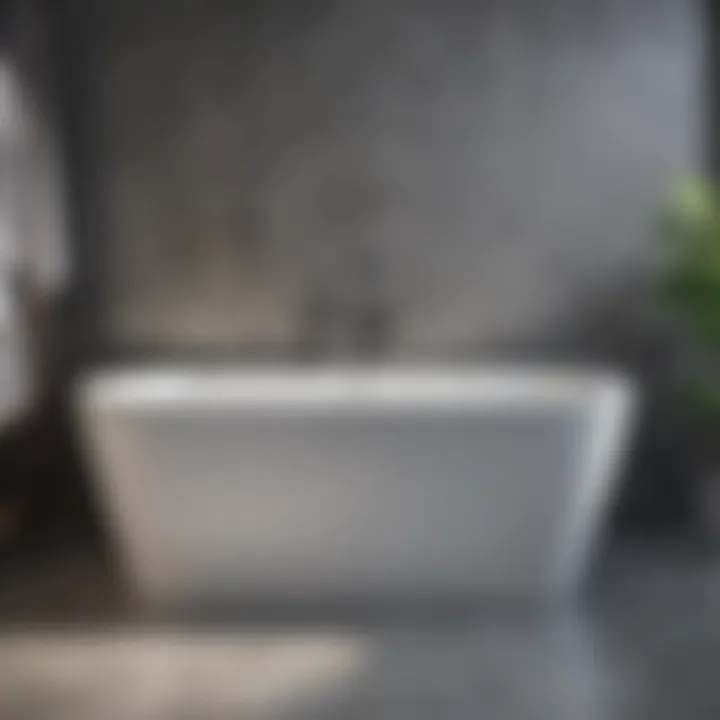
Intro
Addressing the issue of a slow draining bathtub can be both frustrating and inconvenient. This problem is more common than one might think, often stemming from various underlying causes such as hair accumulation, soap residue, or even structural problems in the plumbing system. Having a proper understanding of these factors is essential for effective diagnosis and timely remediation. In this comprehensive guide, we will explore the various causes that contribute to slow drainage, detail diagnostic techniques, discuss practical solutions, and outline preventive measures to maintain an efficient drainage system. By following this guide, homeowners can gain a better grasp on how to tackle this common household issue, ultimately enhancing their bathing experience.
Causes of Slow Draining Tubs
Several key factors can lead to a bathtub draining slowly. Understanding these causes allows for appropriate troubleshooting:
- Hair Buildup: One of the most frequent culprits, hair can accumulate in the drain over time, leading to a significant obstruction.
- Soap Scum: Accumulations of soap scum can form inside the drain, contributing to a clog that restricts water flow.
- Unwanted Objects: Items accidentally dropped into the tub can create a blockage.
- Pipe Diameters: Older plumbing systems may have narrower pipes, further exacerbating drainage issues.
Diagnosis Methods
Once the potential causes are identified, the next step is employing effective diagnostic methods. Consider these approaches:
- Visual Inspection: Look for visible signs of blockage around the drain and overflow.
- Water Flow Test: Pouring water down the drain can help determine if the flow is significantly hindered.
- Plumbing Tools: Utilize plumbing snakes or plungers to assess whether the clog can be dislodged manually.
"Regular maintenance can prevent clogged drains and improve overall hygiene in the bathroom."
Solutions to Restore Drainage
Depending on the diagnosis, several solutions may be applied:
- Baking Soda and Vinegar: This natural method can break down some clogs. Pour a half cup of baking soda followed by a half cup of vinegar down the drain and let it sit for 30 minutes before flushing with hot water.
- Plumbing Snake: For severe clogs, a plumbing snake can help reach deeper blockages.
- Professional Services: If DIY efforts fail, it might be time to call a plumbing expert.
Preventative Measures
To maintain optimal drainage in the long term, consider the following strategies:
- Install a Drain Cover: This can trap hair and debris, preventing it from entering the drain.
- Routine Cleaning: Cleaning the drain regularly can significantly reduce the buildup of materials.
- Monitor Water Flow: Pay attention to any changes in drainage speed, suggesting a potential future issue.
By following this guide, homeowners equip themselves with the tools needed to effectively manage and prevent slow draining tubs, ensuring an enhanced bathing experience.
Understanding Slow Draining Tubs
Understanding the nuances of slow draining tubs is essential for homeowners and enthusiasts alike. It delves into not only the inconveniences presented by this common issue but also the underlying mechanics of drainage systems. When a tub drains slowly, it affects not just the bathing experience, but can also signal larger plumbing concerns that could escalate if ignored.
Definition and Relevance
A slow draining tub refers to a bathtub that takes an unusually long time to empty after use. This condition can arise due to various factors, including blockages and sediment buildup in the plumbing. Understanding this issue is relevant as it informs homeowners of the potential health and structural implications involved. For instance, stagnant water might lead to mold growth or other sanitary concerns.
Key considerations include:
- User Experience: A slow draining tub diminishes relaxation during baths and can cause frustration.
- Potential Damages: Over time, slow drainage may lead to water accumulation, affecting flooring and sub-flooring.
- Maintenance Implications: Recognizing this issue early allows homeowners to take preventative measures, saving time and costs associated with more severe plumbing problems.
By comprehending why slow drainage occurs, individuals can better appreciate the importance of maintaining their tubs and drains. This knowledge empowers them to take action, reducing the risk of damage and ensuring a pleasant bathing environment.
Common Causes of Slow Drainage
Understanding the common causes of slow drainage is essential for effective resolution. This section examines the factors that often contribute to the issue. Each cause can significantly impact the functionality and cleanliness of your bathtub. Addressing these causes early can prevent more serious problems in the plumbing system later.
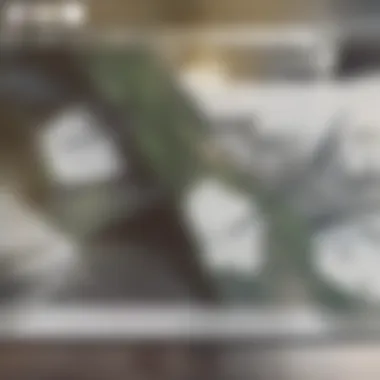

Hair Buildup
Hair is one of the most frequent culprits behind slow draining tubs. During bathing, strands of hair can easily escape and accumulate in the drain. This buildup can create a clog, preventing water from flowing freely. Over time, even small amounts of hair can lead to significant drain blockages.
To mitigate hair problems, consider using a mesh drain cover designed to catch hair before it enters the plumbing. Regularly removing hair from the tub and drain area can also help keep water draining smoothly.
Soap Residue Accumulation
Soap residue is another significant factor in slow drainage. Different soap products, particularly those that contain oils or moisturizers, can leave a sticky film on the sides of pipes. This residue can trap debris, leading to the gradual formation of a blockage.
To prevent soap buildup, consider switching to a more efficient soap product that rinses away more easily. Additionally, periodically cleaning the tub and drain area can minimize residue accumulation. Using hot water during cleaning can help dissolve soap deposits more effectively.
Mineral Deposits
Mineral deposits can build up in pipes, especially in areas with hard water. These deposits can narrow the pipes, making it difficult for water to flow. Calcium and magnesium salts tend to accumulate, particularly around joints and bends in plumbing systems.
To address mineral deposits, consider installing a water softener. This can help reduce the hardness of water entering the home. Regular pipe maintenance and cleaning with vinegar or other solutions can also be effective in clearing minor mineral buildup.
Tree Roots in Pipes
Tree roots represent a less common but serious issue that can lead to slow drainage. Trees naturally seek moisture, and their roots can infiltrate underground pipes through small cracks. Once inside, roots can obstruct flow, leading to slow drainage or even complete blockages.
If slow drainage persists even after addressing common issues like hair and soap residue, it may be time to investigate the plumbing further. Consider hiring a professional service to perform a video inspection, which can reveal hidden root intrusion. Regularly checking outdoor landscaping can also prevent tree roots from encroaching on your plumbing system.
Diagnosing the Problem
Understanding how to diagnose the issue of slow drainage in a bathtub is critical for effectively resolving it. Proper diagnosis ensures that homeowners can pinpoint the exact cause, enabling them to choose the most suitable solution. The benefits of accurate diagnosis extend beyond immediate results; it also aids in avoiding unnecessary expenses and further complications over time. By addressing the symptoms with methodical approaches, the solutions can be both efficient and lasting.
Visual Inspection
Conducting a visual inspection is often the first step in diagnosing drainage problems. This method requires examining the drain, the area around it, and any visible plumbing connections. Look for any signs of visible blockage, such as hair, soap scum, or foreign objects lodged in the drain. Additionally, a close observation of the drainage area may reveal leaks or corrosion within the pipes. This step is crucial because it sets the stage for understanding whether the problem is superficial or indicative of deeper plumbing issues.
Some specific points to consider during a visual inspection include:
- Cleanliness of the Drain: A clean drain typically indicates better drainage. If debris is visible, it may signal that the issue is localized and manageable.
- Drain Cover: Check if the drain cover is properly secured and not obstructing water flow.
- Pipe Conditions: Signs of rust or deterioration can indicate potential future problems.
Performing this inspection is simple but effective in narrowing down the possible cause of slow drainage.
Testing Drainage Speed
Testing drainage speed is an essential step in confirming the diagnosis made during the visual inspection. This involves observing how quickly water flows out of the tub when it is filled to a certain level and then released. Noting the time it takes for the water to drain can provide valuable insights into the severity of the slowing issue.
To conduct this test effectively, follow these steps:
- Fill the Tub with Water: Fill your bathtub to approximately halfway.
- Release the Drain: Unclog the drain and begin timing as the water starts to flow out.
- Monitor the Drainage: Pay attention to how quickly the water level drops.
- Record the Time: Note how long it takes for the tub to drain completely.
An acceptable drainage time might be between 3 to 5 minutes. If it takes significantly longer, this can indicate deeper blockages or plumbing concerns. Identifying slow drainage speed can help in deciding the next steps, be it a DIY solution or seeking professional help.
Accurate diagnosis through visual inspection and drain speed testing can prevent further complications and ensure that the chosen remedy is effective.
DIY Solutions
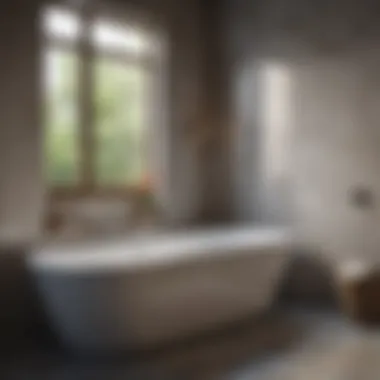
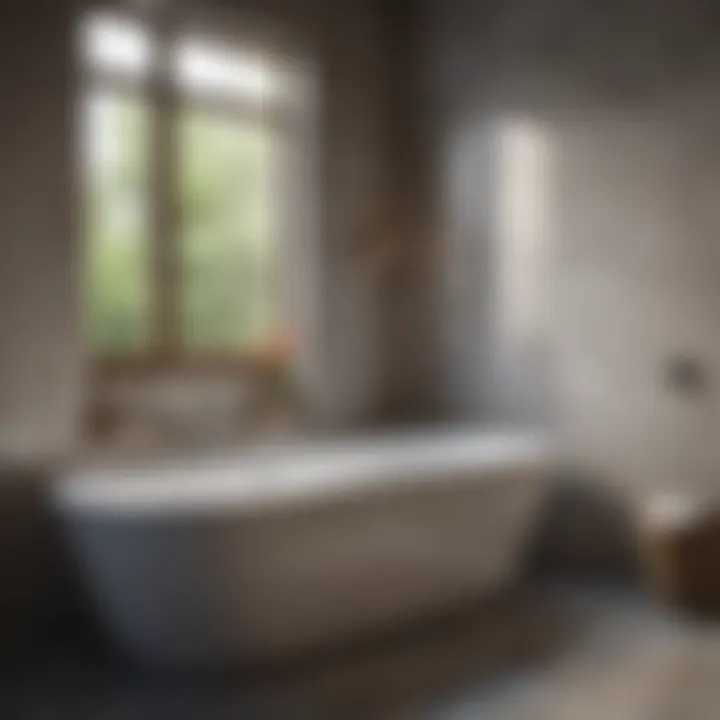
Addressing a slow-draining bathtub can be a simple task for many homeowners. Understanding DIY solutions is crucial, as it equips you with the knowledge and skills to tackle the problem effectively. These methods can save you both time and money, while also helping you gain a better appreciation for your home's plumbing system. Natural solutions are often optimal for maintaining your drain, though sometimes you may need to use harsher chemicals or tools. The key is to understand the unique circumstances surrounding your drainage issue and adjust your approach accordingly.
Using a Plunger
A plunger is a simple but powerful tool. It creates pressure that can dislodge clogs within the drain. To use a plunger effectively, first ensure that the tub is partially filled with water—this helps create a better seal. Place the plunger over the drain and push down firmly, followed by a series of quick up-and-down motions. This action may create enough suction to free the blockage. Remember to clean the plunger after use to avoid transferring debris elsewhere in your home.
Natural Drain Cleaners
Natural drain cleaners often consist of ingredients you already have in your kitchen. Commonly used substances include baking soda and vinegar. Pour half a cup of baking soda down the drain, followed by half a cup of vinegar. The chemical reaction will create fizzing, which can help break down organic waste. Let it sit for at least 30 minutes, then flush with hot water. This method is mild but effective for smaller clogs and is safer for the environment than stronger chemical cleaners.
Chemical Drain Cleaners
When natural methods fail, chemical drain cleaners can be a next step. Products like Drano or Liquid-Plumr work by using strong chemicals to dissolve clogs. Follow the instructions on the label closely to ensure safe and effective use. However, proceed with caution; these substances can be harmful if not handled correctly. Avoid mixing different types of cleaners, as this can create dangerous reactions. If you opt for liquid solutions, allow adequate time for the cleaner to work before flushing the drain with water.
Removing the Drain Cover
Sometimes a clog forms underneath the drain cover. If so, removing it can provide direct access. Use a screwdriver to gently take off the cover, being careful not to scratch the tub. After removal, use a small brush or cloth to clean any visible debris. If you see further blockage, use a coat hanger or similar tool to fish it out. Once you finish, reattach the cover securely to prevent any future issues.
Using a Drain Snake
A drain snake can be particularly useful for deeper clogs. This tool consists of a long, flexible wire that you insert into the drain to reach obstructions. Start by removing the drain cover as described earlier. Insert the snake into the drain gently, twisting and maneuvering it as needed. When you feel resistance, you may have encountered a clog. Continue to push gently while twisting the handle. This should either break up the clog or retrieve it. Once done, flush the drain with hot water to clear any remaining particles.
Remember, DIY solutions can be effective, but always assess the severity of the issue. If none of these methods work, it may be wise to consult a professional.
Preventive Measures
Preventing slow drainage in tubs is critical to ensuring a hassle-free bathing experience. Proactive actions can mitigate the risk of clogged pipes and save on costly repairs. Implementing preventive measures can significantly prolong the life of your plumbing and reduce the frequency of drainage issues, making it essential for homeowners to prioritize these strategies.
Regular Cleaning Regimen
Establishing a regular cleaning regimen can effectively minimize the accumulation of debris in your tub's drainage system. This involves not only cleaning the visible surface areas but also addressing the drain itself. Using a mixture of baking soda and vinegar on a monthly basis is a good practice. This combination can help break down any buildup of soap scum and hair without harming the plumbing. Furthermore, it is advisable to routinely clean the drain cover to ensure it is free from hair and other blockages. A clean drain prevents build-up that can later result in slow draining.
Use of Drain Covers
Using drain covers acts as a simple yet effective barrier against debris entering your drainage system. These covers can effectively catch hair, soap particles, and other larger items that may otherwise go down the drain. Choosing a drain cover that allows for easy cleaning will ensure that it does not become clogged itself. Many types can be found at home improvement stores, and they tend to be inexpensive. Regularly check the cover to ensure it’s functioning properly, as broken covers can allow unwanted materials into the drain.
Avoiding Harmful Substances
Being mindful of what is put down the drain cannot be overstated. Avoiding harmful substances is crucial in preventing future drainage issues. Substances like grease, coffee grounds, and fibrous food waste can contribute significantly to clogs. In addition, many chemical cleaners can build up in pipes over time, leading to more severe problems. Stick to biodegradable products or natural cleaning solutions instead. Doing so will enhance the longevity of your plumbing and ensure a healthier environment for your home.
"An ounce of prevention is worth a pound of cure."
By focusing on these preventive measures, you can maintain a more efficient drainage system and avoid the headaches that come with slow draining tubs.
Professional Solutions
In addressing the challenge of a slow draining tub, professional solutions carry significant weight. These solutions encompass the expertise and tools that only a qualified plumber can provide. While DIY methods can resolve many common issues, some situations may require a professional touch. Experts can accurately diagnose the underlying problems that are not immediately apparent to the untrained eye. Moreover, hiring a professional often means a faster resolution, reducing frustration and potential water damage.
When to Call a Plumber
Recognizing the right moment to call a plumber is critical in managing drainage issues effectively. If household solutions have been tried without success, or if the drainage problem appears to stem from deeper issues such as pipe obstructions or broken lines, a plumber's intervention becomes necessary. Other scenarios warranting a call include:
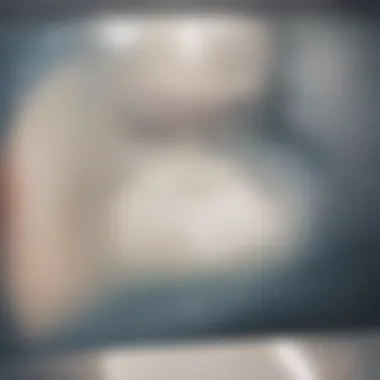
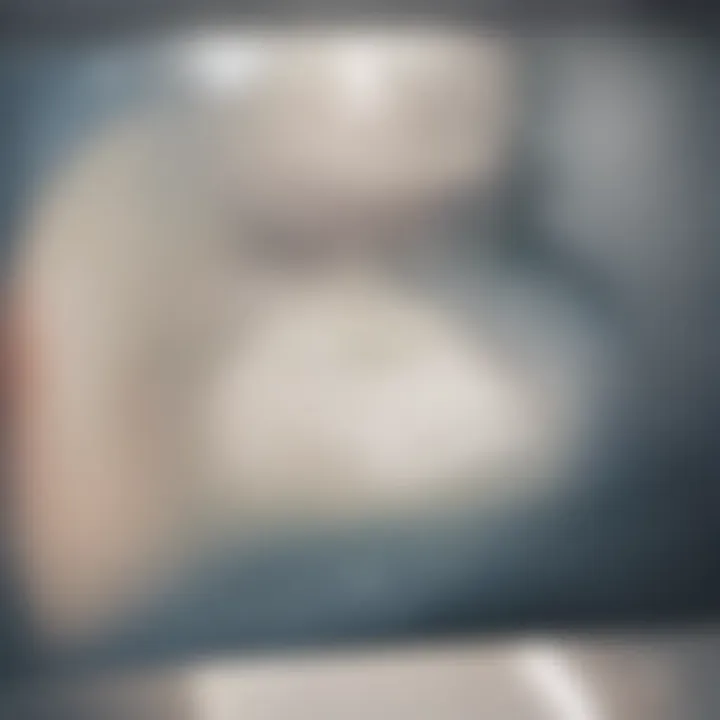
- Multiple Fixtures Affected: If the bathtub isn't the only fixture draining slowly, this may signal a larger issue with the plumbing system.
- Unusual Noises: Gurgling sounds or other strange noises from the drain may indicate air pockets or blockages.
- Sewage Backups: If wastewater is not just present in the tub but in other areas as well, it indicates a serious blockage.
- Visible Damage: Signs of leaking or damage around plumbing fixtures can signal a need for urgent assistance.
The expertise of plumbers enables them to utilize advanced tools like drain cameras and hydro-jetting equipment to pinpoint and resolve issues.
Cost Implications
Understanding the cost implications of hiring a professional plumber helps to set realistic expectations. Rates can vary significantly based on numerous factors, including:
- Location: Service costs differ between urban and rural areas.
- Extent of Work: A simple unclogging will typically cost less than extensive repairs or pipe replacements.
- Emergency Services: If help is needed after hours or during weekends, costs could escalate significantly.
- Labor Rates: Different plumbers have different pricing structures, and experience can factor into the rate charged.
As an investment in home maintenance, professional plumbing services can save money over time by preventing further damage and persistent issues. Typically, homeowners may expect to pay anywhere from $150 to $400 for standard services, depending on complexity. However, serious issues requiring extensive work could result in costs that exceed these estimates.
Remember: The price of neglect can ultimately be much higher than the cost of a professional intervention.
Long-Term Maintenance
Long-term maintenance of your bathtub’s drainage system is crucial not only for enhancing its efficiency but also for prolonging its lifespan. By adopting a proactive routine, homeowners can identify potential issues before they escalate into costly repairs. Maintenance is more than just a chore; it is an investment in your home’s comfort and integrity.
Periodic Inspections
Periodic inspections serve as a vital first line of defense against slow draining tubs. A thorough check-up can uncover hidden problems that may not be visible during regular use. Inspecting your tub can include several aspects:
- Visual Checks: Look for any visible signs of wear or damage to the pipes, drain cover, or surrounding areas.
- Functional Tests: Test the drainage speed regularly. Are there any noticeable changes in how quickly the water drains? If you spot anomalies, investigate further.
- Listen for Unusual Noises: Sometimes, gurgling sounds may indicate a developing blockage. Pay attention to such cues and address them early.
These measures can prevent more severe backups or leaks down the line, thereby saving you time and money.
Pipeline Upgrades
Upgrading your pipeline can seem like a daunting task, but it can significantly improve the drainage flow. Old pipes may be narrow or corroded, leading to slow drainage. Consider the following points:
- Material Considerations: Modern materials like PVC are typically more durable and less prone to build-up than older metal pipes. It might be beneficial to consider replacements.
- Diameter Increase: If feasible, increasing the diameter of your pipes can reduce the chance of blockages occurring. This allows for smoother water flow, especially in homes with multiple bathrooms.
- Overall System Assessment: In some cases, the entire plumbing system may need a review to assess its compatibility with newer fixtures.
"Proper maintenance is in deed your best strategy to ensure efficient drainage and reduce long-term issues."
Investing in upgrades not only enhances performance but also increases the value of the property, making it a worthwhile consideration for homeowners.
Resources for Further Reading
Understanding how to fix a slow draining tub requires not only practical knowledge but also a deeper insight into plumbing concepts and maintenance techniques. Providing resources for further reading is essential, as it allows homeowners and enthusiasts to expand their knowledge. This section underscores the significance of additional learning materials related to drainage problems and plumbing maintenance.
Imporance of Further Reading
Further reading serves several purposes. First, it aids in diagnosis accuracy. The literature available online, such as articles on websites like Wikipedia or Britannica, often goes into detail about common plumbing issues, enabling homeowners to correctly identify the nature of their problem. When readers are equipped with accurate information, they can make informed decisions about whether to tackle the issue themselves or call a professional.
Second, exploring various solutions can enhance a homeowner's problem-solving skills. By learning different methods and solutions, readers may discover alternative techniques not mentioned in the initial guide. For example, they may read about special tools or products that can effectively clear clogs, or they may find natural remedies that avoid harsh chemicals, contributing to sustainable home maintenance practices.
Recommended Resources
There are myriad resources available, and some are particularly beneficial when addressing plumbing issues. The following categories provide a range of useful knowledge:
- Online Articles: Websites like Reddit have valuable user discussions concerning experiences and solutions for plumbing issues. Engaging in these discussions can offer unique insights.
- How-To Videos: Platforms such as Facebook often host comprehensive video guides that visually demonstrate plumbing techniques and repairs. These can be exceptionally useful for visual learners.
- Books and eBooks: Several publications on home maintenance cover plumbing topics in-depth. Authors often include step-by-step instructions, diagrams, and troubleshooting tips that can be very beneficial.
"The best way to learn about plumbing repair is by looking at practical demonstrations and reliable literature."
End
In summary, investing time in further reading enhances understanding and fosters confidence in addressing plumbing issues. The knowledge obtained from these resources complements the information gathered from this guide. Homeowners should take advantage of these materials, as they prepare for various challenges that may arise with their slow draining tub. Often, continued education in this area brings a greater appreciation for one's home and its systems.















